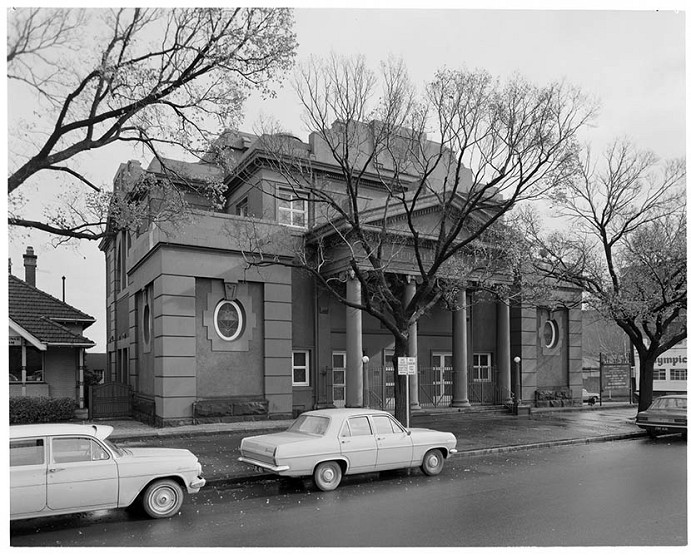
New church in Southbank
In the early twentieth century, traditional church denominations in Melbourne were joined by two new churches - the Latter-day Saints (generally referred to as the Mormons) and the Christian Science Church.
Both had their origins in the USA and were seeking to spread their influence around the globe. Early services of the Christian Science Church were held in the Athenaeum Hall in the city – as attendances grew, the church sought its own site, selecting and purchasing one on the corner of Dorcas St and St Kilda Rd in 1914.
They engaged the architects Bates, Peebles and Smart to prepare plans for a church and Sunday school. But it was not a good time for building and construction was delayed until 1920, after World War I.
The result for Southbank was the First Church of Christ Scientist, one the more distinctive churches in the area. Designed in a “Neo-Grec” style, it has a temple-like form with Greek Revival elements and is topped with a shallow copper-topped dome. Finished in roughcast render, the double-storeyed building was described in newspapers as being “of novel design” as it featured a church auditorium on the upper storey and the Sunday School on the lower storey.
Another feature, unusual in a church building, was a hydraulic lift, provided for the benefit of those who were attending faith healing services and presumably could not manage stairs.
It is included on the Heritage Victoria register, being regarded as significant as a fine and rare example of early twentieth century classicism applied to an ecclesiastical building in Victoria. The exterior and interior of the church have a high level of integrity, retaining original features such as light fittings, pews, heaters, built-in lecterns, and decorative organ screens.
The church was enhanced in 1928 with the addition of a Willis organ (at a cost of £7,500) and a new block containing offices in 1934, designed by the original architects (then known as Bates, Smart and McCutcheon). The 1934 flat-roofed building with walls finished in textured cement stucco and a show window facing onto Dorcas Street, and was designed in the same free classical style as the main building and the Sunday school block, as the architects sought complete conformity of style between the main building and the new block.
Overcrowding resulted in the construction of another church in Elsternwick in 1931 and another in Camberwell in 1936. By the 1970s there were 57 churches – but it all started in Southbank. •

Revitalisation of Alexandra Gardens progresses

Build-to-rent development gets green light in South Melbourne






 Download the Latest Edition
Download the Latest Edition